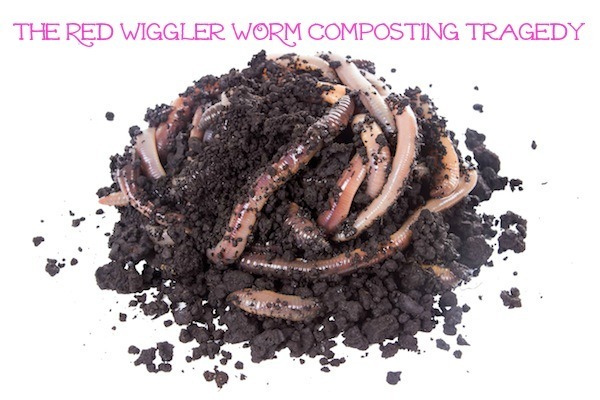Recognizing the Benefits of Red Wiggler Composting: Exactly How This Effective Technique Transforms Organic Waste Into Nutrient-Rich Soil Changes
Red Wiggler composting, using the types Eisenia fetida, presents an engaging approach to natural waste administration, transforming kitchen scraps and backyard debris into beneficial dirt modifications. This approach not only boosts soil fertility yet likewise addresses pressing environmental problems, consisting of land fill waste reduction and greenhouse gas exhausts. As we explore the intricacies of this procedure, the multifaceted benefits it supplies might disclose unanticipated understandings into lasting practices and ecological balance. Comprehending these dimensions might motivate a reevaluation of how we regard waste and its prospective contributions to a much healthier world.
What Are Red Wigglers?
Red wigglers, clinically referred to as Eisenia fetida, are a species of earthworm that play an essential role in vermicomposting systems. These worms are defined by their reddish-brown shade, fractional bodies, and an unique capability to thrive in organic-rich settings, making them optimal for composting applications - Red Wiggler Composting. Unlike their garden-dwelling equivalents, red wigglers like to inhabit the upper layers of dirt, where decomposing matter is abundant
Generally determining between 3 to 4 inches in length, red wigglers have a high reproductive price, enabling them to multiply swiftly under optimum problems. They have an unique gastrointestinal system that enables them to refine organic waste effectively, transforming it into nutrient-rich spreadings, which are extremely advantageous for plant growth.
Their resistance to varying moisture degrees and temperature ranges additionally enhances their energy in vermicomposting configurations, making them a popular selection among composting enthusiasts. Furthermore, red wigglers are cardiovascular organisms, which requires a well-aerated composting setting, ensuring effective decomposition. Understanding the biological characteristics and actions of red wigglers is vital for maximizing their use in lasting waste management methods.

Advantages of Vermicomposting
Utilizing the power of vermicomposting offers a wide range of ecological and agricultural benefits. It significantly decreases natural waste in landfills, thus decreasing methane exhausts, a potent greenhouse gas. By drawing away food scraps and lawn waste to vermicomposting, we support an even more lasting waste administration system.
Additionally, vermicomposting improves dirt wellness. The spreadings generated by red wigglers are abundant in important nutrients, microbes, and enzymes, improving dirt framework and fertility. This nutrient-rich amendment advertises durable plant development and increases water retention, minimizing the need for chemical plant foods.
Additionally, vermicomposting fosters biodiversity in the dirt community. The introduction of useful microbes from worm castings aids in illness suppression and nutrient cycling, developing a healthier atmosphere for plants.
Economically, vermicomposting reduces the expenses connected with chemical inputs and waste disposal. Gardeners and farmers can cultivate top notch produce at reduced expenditures, adding to food protection and sustainability.
Exactly How to Beginning Composting
Starting a composting endeavor can be a straightforward and gratifying procedure. This will certainly help maintain a well balanced temperature, crucial for the composting procedure.
Gather natural products such as kitchen scraps, yard waste, and shredded paper. Go for a balanced mix of 'environment-friendly' materials, high in nitrogen (e.g., fruit scraps, coffee premises), and 'brownish' products, rich in carbon (e.g., dried leaves, cardboard) A ratio of roughly 2:1 eco-friendly to brown products is perfect.
Beginning layering your products, ensuring adequate air flow by turning the pile consistently. This promotes aerobic disintegration, speeding and reducing smells up the procedure. Screen dampness levels; the compost should feel like a damp sponge yet not excessively damp.
Nutrient Account of Vermicompost
Composting, especially with red wigglers, produces a nutrient-rich item understood as vermicompost. This organic change is distinguished by its high concentration of important nutrients, making it a vital resource for horticulture and agriculture. Vermicompost usually has elevated degrees of macronutrients such as nitrogen, phosphorus, and potassium, which are crucial for plant growth. Furthermore, it gives trace elements like calcium, iron, and magnesium, promoting durable plant development and enhancing dirt health and wellness.
The microbial activity present in vermicompost additionally enriches its profile, introducing advantageous bacteria and fungis that promote nutrition accessibility and click this uptake in plants. This organic component help in subduing plant conditions and enhancing dirt framework, resulting in improved water retention and aeration.

Environmental Effect of Composting
The ecological impact of composting, particularly via using red wigglers, is complex and profound. This method dramatically minimizes the quantity of organic waste sent out to land fills, which consequently minimizes greenhouse gas emissions, specifically methane-- a powerful contributor to environment change. By diverting organic materials from landfills, red wiggler composting not over here just helps minimize ecological destruction yet additionally promotes lasting waste monitoring techniques.

In addition, composting adds to carbon sequestration, as the process records carbon dioxide from the environment and shops it in the soil. This natural procedure help in combating climate modification while improving the soil - Red Wiggler Composting. Overall, red wiggler composting offers a sensible, environmentally friendly remedy for waste management and ecological sustainability, advertising much healthier ecological communities and a more sustainable future
Verdict
In verdict, Red Wiggler composting offers as an efficient approach for transforming natural waste into valuable dirt changes. The procedure not just enhances soil fertility and structure however likewise mitigates ecological issues connected with waste disposal.
Red Wiggler composting, using the varieties Eisenia fetida, provides a compelling approach to organic waste management, transforming kitchen scraps and lawn debris right into valuable dirt amendments. Unlike their garden-dwelling equivalents, red wigglers favor to occupy the upper layers of soil, where decomposing matter is bountiful.
The spreadings generated by red wigglers are abundant in essential nutrients, microorganisms, and enzymes, improving these details soil structure and fertility. The nutrient-rich byproducts of red wiggler activity improve soil structure, rise water retention, and advertise biodiversity within the soil environment.In final thought, Red Wiggler composting offers as an efficient technique for converting natural waste into beneficial dirt amendments.